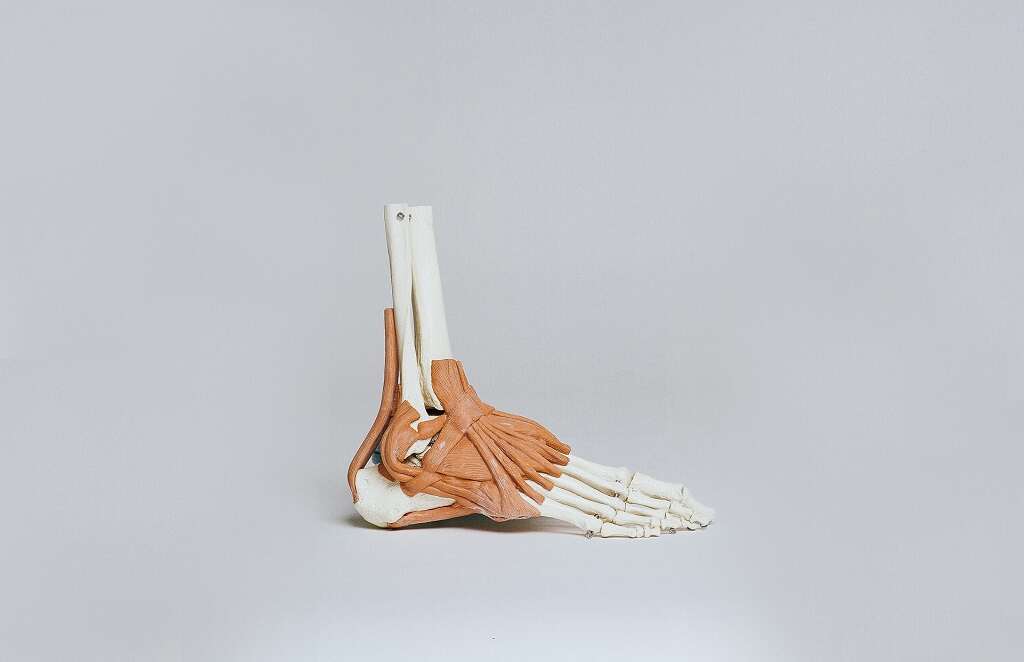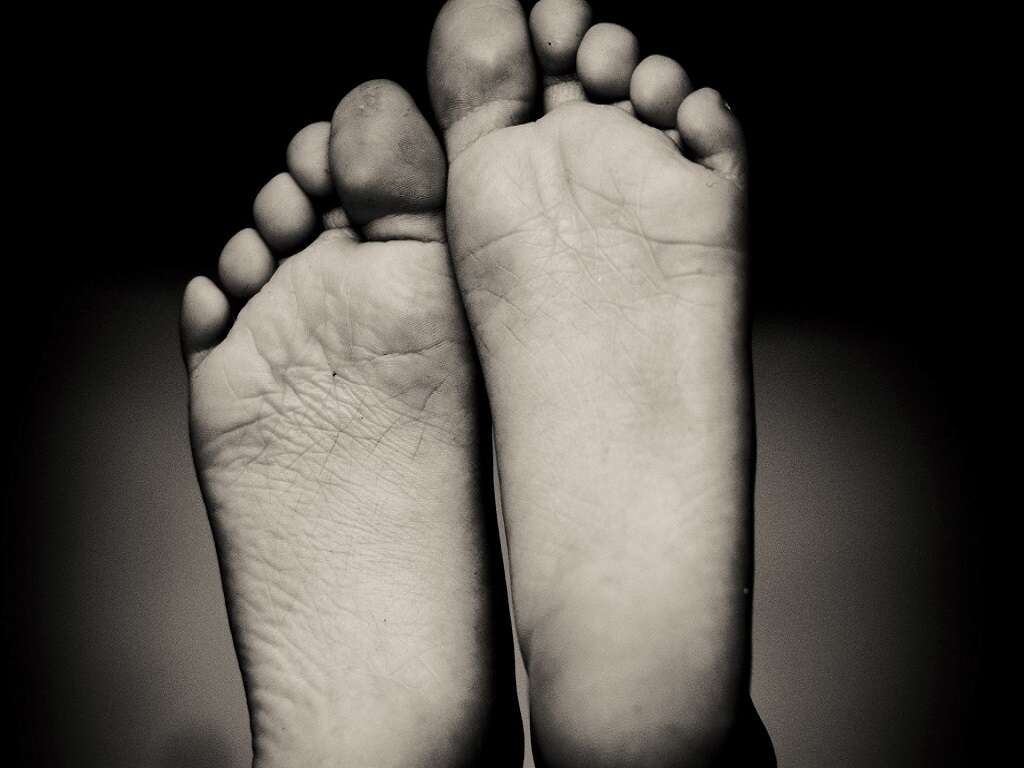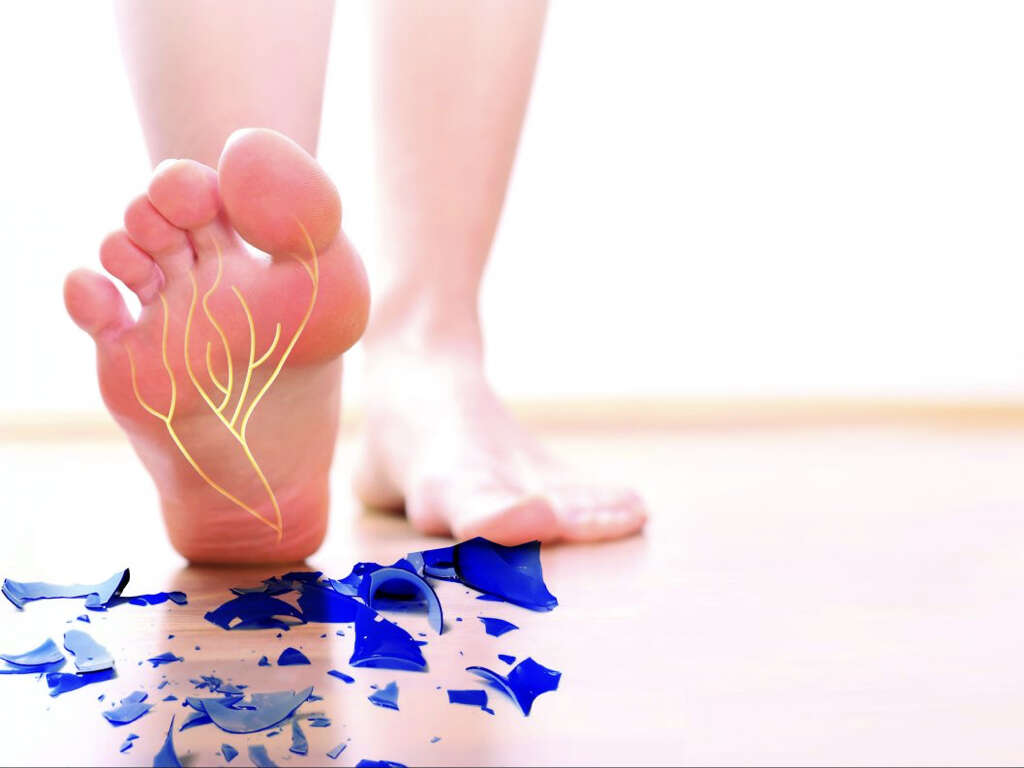10 Charcot Foot Symptoms
 Article Sources
Article Sources
- 1. 'Charcot Foot.' University of California, San Francisco, surgery.ucsf.edu/conditions--procedures/charcot-foot.aspx
- 2. 'Diabetes Complications and Amputation Prevention.' Foot Health Facts, www.foothealthfacts.org/conditions/diabetic-complications-and-amputation-prevention
- 3. 'Charcot Foot.' Foot Health Facts, www.foothealthfacts.org/conditions/charcot-foot
- 4. 'Peripheral Neuropathy - Symptoms and Causes.' Mayo Clinic, 22 May 2019, www.mayoclinic.org/diseases-conditions/peripheral-neuropathy/symptoms-causes/syc-20352061
- 5. 'Charcot Arthropathy' FootCareMD, www.footcaremd.org/conditions-treatments/the-diabetic-foot/charcot-arthropathy
- 6. 'A Patient’s Guide to Foot Anatomy.' OrthoNorCal, www.orthonorcal.com/blog/a-patients-guide-to-foot-anatomy-21481.html
Charcot foot is a complication of diabetes that involves the progressive weakening of the bones and soft tissue in the foot. Peripheral neuropathy, which is primarily responsible for nerve damage, can cause a loss of sensation, pain, weakness and numbness.
This usually results in a series of microtraumas going unnoticed, even when the foot is being used as normal. Over time, this can cause a repetitive strain injury. Charcot foot is not common. It's thought that mistaken and late diagnoses may have distorted its incidence, and it may be more prevalent than previously thought.1‘Charcot Foot.’ University of California, San Francisco, surgery.ucsf.edu/conditions–procedures/charcot-foot.aspx
Bone Structure Loss
The foot has 26 bones, 33 joints and more than 100 tendons, muscles and ligaments, while the ankle has three bones that attach it to the foot.6‘A Patient’s Guide to Foot Anatomy.’ OrthoNorCal, www.orthonorcal.com/blog/a-patients-guide-to-foot-anatomy-21481.html Sprains and other injuries in this area aren't uncommon. In most instances, people make a full recovery. However, those who have peripheral neuropathy may not feel the pain because the nerves are damaged.
The continued use of the foot can result in bone trauma, which can lead to bone loss. If the use is prolonged and the condition remains unmanaged, the bones in the foot may eventually lose structure and collapse.
Toe Curling
When a foot is injured, part of the body's natural response is to reduce the production of calcium and other materials designed to keep the bones strong, which can ultimately result in the loss of shape and structure. This leads to the foot taking on the appearance of a rocker chair.
Although the location of the break contributes to the level of deformity, in most cases, as the foot loses shape, the toes curve around under the feet and may resemble claws.

Twisted & Unsteady Ankles
With the foot losing all shape and the bones effectively collapsing on each other, extra pressure is placed on the ankle joints. However, this pressure isn't sustainable. Over time, the ankle joint may twist and distort, creating further instability.
Due to the altered sensations of pain and touch, the person may be largely oblivious to the process. While the ankle may heal, fibrous tissue may become the more dominant tissue type, and its inflexibility may cause further instability.
Open Sores
In a person with peripheral neuropathy, small wounds to the feet may go unnoticed and unmanaged. As the foot loses shape and the bones disintegrate, broken pieces of bone can create pressure points, which may develop into open sores.
A good blood supply is needed for healing. However, diabetes results in damage to the micro blood vessels and poor peripheral blood flow, which can increase the likelihood of chronic ulcers developing. Eventually, amputation may be required in some cases.2‘Diabetes Complications and Amputation Prevention.’ Foot Health Facts, www.foothealthfacts.org/conditions/diabetic-complications-and-amputation-prevention

Decreased Sensation
Charcot foot is usually the result of the decreased sensation in the foot caused by peripheral neuropathy. This means that pain and temperature don't register normally, and sensation is reduced.
As a result, the extent of an injury to the foot may not be fully appreciated. If the foot isn't given time to repair itself, further use can exacerbate the injury. This increases the probability of developing Charcot foot.3‘Charcot Foot.’ Foot Health Facts, www.foothealthfacts.org/conditions/charcot-foot
Joint Dislocation
As the foot loses its structure, it implodes inward. This places pressure on the ligaments and muscles that maintain the integrity of the joint. As bones disintegrate and change position, the ligaments and muscles are stretched, causing the joint to become loose. Eventually, this may result in the joints dislocating.
Fibrous tissue isn't as reliant on a good blood supply. Over time, it tends to replace the ligaments responsible for the flexibility of the foot and ankle, which can cause rigidity.

Neuropathy
Neuropathy is an underlying problem of Charcot foot. The peripheral nervous system extends from the spinal cord to other areas of the body, including the feet. It's responsible for motor function, pain, temperature and sensation. When the peripheral nerves are damaged, a person may experience weakness, numbness, pain or temperature irregularities.
Diabetes is one of the leading causes of peripheral nerve damage. People with neuropathy may experience stabbing, burning and tingling sensations.4‘Peripheral Neuropathy - Symptoms and Causes.’ Mayo Clinic, 22 May 2019, www.mayoclinic.org/diseases-conditions/peripheral-neuropathy/symptoms-causes/syc-20352061
Discomfort
Aching and discomfort in the foot tend to become more prevalent as Charcot foot worsens. It results from structural changes and the loss of structure. As joints dislocate, the foot may ache.
The level of discomfort is limited by nerve damage. With peripheral neuropathy, the damaged nerve's ability to communicate with the brain is disrupted. As fibrous tissue increases, the flexibility of the foot becomes limited, which can result in stiffness and intense throbbing.

Swelling
When the body sustains an injury, a response is initiated by the immune system to protect the body, prevent further damage and assist in the repair process. The destructive processes associated with Charcot's foot initiate an uncontrolled cycle of inflammation as the damage progressively worsens.
As a result of inflammation, the foot tends to swell and become warm to the touch. People with diabetes should regularly monitor their feet for changes to ensure that any damage to the foot is recognized and addressed.
Erythema
Some people with Charcot Foot experience erythema, or redness. Erythema is the third component of the triad of symptoms associated with inflammation. The other two are swelling and warmth.
When an injury occurs, inflammation is the body's immediate and first line of defense. Poor circulation may eventually result in the affected area receiving less oxygen and nutrients, which further aggravates this condition. It is important to treat both the Charcot foot and the underlying cause of neuropathy, whether it's diabetes, an infection or other condition.










